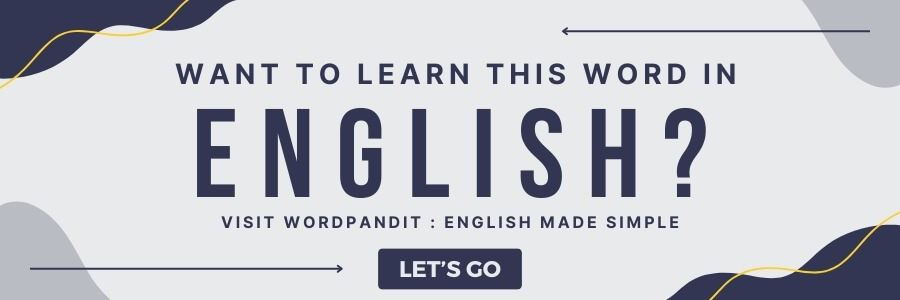History & Words: ‘Appeasement’ (21 May)
Welcome to ‘History & Words’! 🌟 Main hoon Prashant, Wordpandit aur Learning Inc. Network ka founder. Yeh series language learning aur historical context ko connect karti hai, taaki vocabulary improve ho aur history ki understanding bhi deep ho.
Chaliye, shabdon ki iss journey par mere saath chaliye aur naye naye words explore karte hain! 😊
📚 Table of Contents
🔍 Word of the Day: Appeasement
Pronunciation: /əˈpiːzmənt/ (uh-PEEZ-muhnt)
Definition: A diplomatic policy of conceding to aggressive demands in order to maintain peace and avoid conflict, most often associated with Britain’s policy toward Nazi Germany in the 1930s.
🌍 Parichay (Introduction)
21 May 1938—Czechoslovakia ne partial military mobilization order kiya, kyunki unhe laga ki German troops Sudetenland par attack kar sakte hain.
Is action ne “appeasement” policy ki limitations expose kar di, jo Britain aur France use kar rahe the in hopes of avoiding another World War.
Aaj Appeasement ek political term hone ke alawa ek moral dilemma ka bhi symbol ban chuka hai—kab shanti ban jaati hai samarpan?
🌱 Shabd ka Utpatti (Etymology)
Appeasement bana hai Old French “apaisier” se:
- “a-” = to
- “pais” = peace
Latin root: “pacem” (peace)
Toh Appeasement ka literal arth hai: “to bring peace”
Lekin 20th century me yeh shabd bana: “to bring peace by surrendering to a threat.”
📖 Mahatvapurn Shabdavali (Key Vocabulary)
- 🔑 Appeasement: Giving in to demands to avoid conflict
- 🔑 Sudetenland Crisis: 1938 territorial tension over ethnic German region in Czechoslovakia
- 🔑 Munich Agreement: 1938 pact that ceded Sudetenland to Hitler
- 🔑 Chamberlain Doctrine: U.K. Prime Minister Neville Chamberlain’s peace-at-any-cost policy
- 🔑 Axis Aggression: Expansionist moves by Germany, Italy, Japan prior to WWII
- 🔑 Collective Security: Policy promoting allied resistance over unilateral surrender
🏛️ Itihasik Sandarbh (Historical Context)
1930s: Hitler ka Germany Versailles Treaty todkar military buildup kar raha tha
- Britain aur France ne military response ki jagah diplomatic accommodation ka rasta chuna
- Objective: Avoid another catastrophic war
21 May 1938: Czechoslovakia ne German troop movement ke response me mobilization ki
- Showed that Hitler’s moves weren’t empty
- Yet, Western allies pressured Prague to avoid escalation
- Result: Appeasement continued, Hitler emboldened, war closer
⏳ Samayrekha (Timeline)
- 1933: Hitler becomes Chancellor of Germany
- 1936: Germany remilitarizes Rhineland
- March 1938: Anschluss—annexation of Austria
- 21 May 1938: Czechoslovakia partially mobilizes
- Sept 1938: Munich Agreement—Sudetenland ceded to Germany
- Sept 1939: WWII begins with German invasion of Poland
🌟 Is Din ka Mahatva (The Day’s Significance)
21 May ka din reflect karta hai:
- ✅ Diplomatic fear versus strategic foresight
- ✅ Czechoslovakia ki clear warning ko ignore kiya gaya
- ✅ Hitler ne dekha: “Allies talk, but won’t act”
- ✅ Appeasement ne peace nahi diya—prolonged insecurity diya
Yeh din batata hai: Kabhi kabhi peace preserve karne ke chakkar me, war accelerate ho jaata hai.
💬 Prasiddh Ukti (Quote)
“An appeaser is one who feeds a crocodile, hoping it will eat him last.”
— Winston Churchill(Matlab: Jab aap aggressive powers ko satisfy karte hain, aap unki bhookh badhate hain—na ki khatam karte.)
🔮 Aaj Ka Matlab aur Chintan (Modern Usage & Reflection)
Aaj Appeasement ka arth hai:
- ✅ Weak policy response to bullies or aggressors
- ✅ Used critically in political debates—“appeasement to X nation”
- ✅ Strategic studies me it’s a case study in failed deterrence
- ✅ Also used in psychology: “appeasement behavior” in trauma or abuse survivors
Yeh term hume sikhata hai: Peace must be built on balance—not on begging.
🏛️ Virast (Legacy)
- ✅ Appeasement ki failure ne WWII ke baad NATO, UN aur collective defense concepts ko janm diya
- ✅ Modern diplomatic doctrines—“never another Munich” principle
- ✅ Military mobilization by smaller nations (like Ukraine today) echoes Czechoslovakia’s actions
- ✅ Appeasement ki study har military academy aur diplomatic training me essential hai
🔍 Tulnatmak Vishleshan (Comparative Analysis)
Pehle: Appeasement seen as pragmatic peacekeeping
Baad me: Became symbol of political cowardice and moral failure
Aaj: Balanced diplomacy valued, but with firm red lines and deterrence
Yeh shift batata hai: Peace is noble—but not if it comes with the price tag of silence and surrender.
💡 Kya Aapko Pata Hai? (Did You Know?)
🎓 Antim Vichar (Conclusion)
‘Appeasement’ ek aisa shabd hai jisme shanti ki chah aur haar ka chehra dono chhupe hain.
21 May 1938 ko jab Czechoslovakia ne mobilization kiya, unki aankhon me dar nahi—dharma tha: protect your people, even when others don’t support you.
Aaj jab hum diplomacy, defense aur dialogue ki baat karte hain—Appeasement hume quietly yaad dilata hai: “If peace becomes fear, war becomes inevitable.”
📚 Aage Padhne Ke Liye (Further Reading)
- 📖 Appeasement: Chamberlain, Hitler, Churchill, and the Road to War – Tim Bouverie
- 📖 The Gathering Storm – Winston Churchill
- 📖 The Origins of the Second World War – A.J.P. Taylor
- 📖 Munich 1938: Appeasement and World War II – Faber & Faber Archives
- 📖 Czechoslovakia Between Stalin and Hitler – Igor Lukes








